GLOBALLY RENOWED, FULL KEEL BRISTOL CRUISER -Perfect 4 Couple 2 Sail the World
1974 Designed by Famous Yacht Builder/Designer Ted Hood Built by Bristol Yachts 2 exacting Naval Standards
| Make: | Designed by Famous Yacht Builder/Designer Ted Hood |
| Model: | Built by Bristol Yachts 2 exacting Naval Standards |
| Type: | Full Keel World Cruiser |
| Year: | 1974 |
| Location: | Greenport, New York, United States |
| Want to buy? | Contact seller! |
Description
The name says it all."BRISTOL"
In yachting, the two names Bristol and Hinkley are like the names Rolls Royce and Bentley for autos. No two names command a greater respect at yacht clubs and exotic harbors world-wide. Ted Hood was the yacht designer behind both of these legendary brand names.
PRIOR TO BIDDING PLEASE READ THE ENTIRE AUCTION TEXT TO BECOME A FULLY INFORMED BUYER. FEEL FREE TO CALL ME IN PERSON TO DISCUSS THE BOAT AND YOUR CRUISING PLANS WITH IT. William 970 319-4361
PAYMENT IS DUE IN FULL WITHIN 24 HOURS - NO EXCEPTIONS. PLEASE RESPECT THAT WE ARE ONLY SELLING THE BOAT BECAUSE WE NEED THE MONEY ASAP TO PAY OTHER BILLS.
This auction closes at 4 pm Eastern time on Saturday afternoon. If you want to win the auction make sure to get your best bid in early or else set the alarm on your phone and log on to monitor your bidding status in the final few minutes of the auction. Sometimes the final few minutes can determine who wins the auction.
I hope it goes to a good home.
The photo of the boat sailing is a not the actual vessel but a picture of a sister-ship that I got off the web to show you what these fine small ships look like under sail. All the other photos were taken very recently and show the actual condition of the boat. See the close up of the through-hull fitting to see what happened to the boat and why it is now available to you for a tiny fraction of its actual value. Boat is sold AS IS, as you see it in the photos. This boat has tiller steering rather than wheel steering like the sister-ship and needs some minor restoration as you can see in the photos, but otherwise the same boat. Nice thing about Bristols is since they are all glass and wood, there's not much to be damaged by short term water exposure other than the electronics.
Here is your opportunity to join the elite ranks of global sailors who own a Bristol...a name that is most commonly introduced as the term "Bristol Finish," and as a household sailing term embodies the very essence of the finest quality craftsmanship yachting has ever produced.
Want to buy a 21st century Bristol of any size? Get ready to write a check for hundreds of thousands of dollars.
THIS IS A "NO RESERVE" AUCTION FOR ONE OF THE RARE 32 FOOT BRISTOLS, BUILT AT THE HEIGHT OF THE "CLASSIC PLASTIC" ERA WHEN FIBERGLASS BOATS WERE BEING BUILT STRONGER THAN STEEL BECAUSE THEY HAD NOT YET FULLY OVERCOME THE PREJUDICE OF DECADES OF WOODEN BOAT TRADITION AND PEOPLE WHO BELIEVED WRONGLY THAT A FIBERGLASS BOAT COULD NEVER BE AS SEAWORTHY AS ONE BUILT OF PLANKS AND WOODEN PINS.
A Bit about the World Class Designer who brought this legendary world cruiser to life and why he is considered one of the greatest Naval designers of modern yachting history.
TedHood
| 1927-2014 | ||||||
| | ||||||
| Ted Hood, besides being the founder of Hood Sailmakers which, at one time was the worlds largest, is a successful racing skipper, the founded of Little Harbor Yachts, is an innovative marine inventor and yacht designer. Hood officially started his sailmaking business in 1950, though during the 1940's sail repair was a side business for him, using the living room of his parent's home as a loft floor. By the mid-1950's, Hood was selling sails to the top sailors of the time. In 1959, Hood's success skippering his first major design "Robin" in that year's New York Yacht Club Annual Cruise (winning 4 out of 7 races) put Hood firmly in public's mind as a top sailor, sailmaker and yacht designer. After that, Hood's sailmaking business boomed and by the end of the 1960's, Hood Sailmaker lofts covered the globe, from home base in Marblehead to Australia. While his sailmaking business grew, Hood also built and skippered a successful series of keel and centerboard racing boats under names Robin, Robin Too and even Robin Too II …there have been so many "Robins" over the years that Hood has almost lost count. Hood captured first in the Newport-Bermuda Rae in 1968; he sailed another victory in the 1971 Marblehead-Halifax Race, (10 years after his 1961 Halifax win); and Robin Too II took the 1974 SORC (Southern Ocean Racing Circuit). That was perhaps Hood's most successful year in racing. As skipper of the new Sparkman & Stephens designed aluminum-hulled Courageous he won the America's Cup sailing away from Australia's Southern Cross, 4-0. Three years later he campaigned Independence, the second 12-Meter he designed (the first was the 1960's Nefertiti"), against Courageous, which he had redesigned, but was runner up to Courageous and Ted Turner in the defender trials. As an inventor, Hood was the first sailmaker to weave his own Dacron cloth. He is also credited with early designs for grooved headstays, jib roller furling, as well as the Stoway mast and the Stoboom. More than 6,000 of his Little Harbor yachts, from 35 to 75 feet, are sailing today. But perhaps the most famous of his vessels is the 60 foot "American Promise", in which Dodge Morgan set a solo circumnavigation record of 150 days in 1985-86; it was the last Hood boat to be built in Marblehead before Hood's design and building facilities moved to Portsmouth, Rhode Island. In the early 1980's, Hood sold his sailmaking operation to concentrate on his boatbuilding interests. What had been a side business turned into Hood's main business as Hood started building and marketing his Little Harbor line of sailboats. These yachts were built in Taiwan; first at yards that Hood had relationships with, and later at his own yard located in the northern end of Taiwan. By the end of the 1980's, Little Harbor had become known as one of the highest quality yachts one could own. Hood did not stop there. His dream had also been to create a world-class yacht service center. For many years he had been seeking the right place to do this, and in 1985, he found that location; the Navy's World War II fuel depot in Portsmouth, RI known as "Melville" was being sold off by the government. Hood purchased the land and by 1987 had built the "Ted Hood Marine Complex". The cornerstone of the complex was Hood's "Little Harbor Marine" yacht service business, but the complex also rented space to many marine companies to provide "one-stop service" for customers. In 1987 Hood also began building boats in Portsmouth having purchased the assets of the Black Watch company. This was Hood's first venture into powerboat building. The late 1980's and early 1990's saw a sharp drop in boat sales. As a result, Hood consolidated operations by moving sailboat building to Portsmouth from the Far East. As sailboat sales continued to declined, Hood moved aggressively into the powerboat market with his line of Little Harbor "Whisperjet" water-jet powered yachts. By 1998, Hood's boat production was 100% power, not by choice but by requirements of the boat market. During the 1990's Little Harbor Marine grew to be the best and largest yacht service facility in the Northeast. Little Harbor Whisperjet sales were strong as well, and Hood's yacht brokerage and yacht design divisions also did well. In 1999, the opportunity became available to sell the company to the investor group that two years earlier had purchased The Hinckley Company. The Hood family thought the match was good, adding to Hinckley's world-renowned boat building business a more extensive and southern service operation. So, in March of 1999, the company was sold, and Hinckley and Little Harbor came under common ownership. Today Ted Hood continues to consult for The Hinckley Company, as well as working on his own new projects, including design and building of a power catamaran and motorsailer for his Portsmouth Marine Company and development of a large marina on land south of the Little Harbor complex that Hood retained. | ||||||
| | ||||||
| BY THIS DESIGNER: | ||||||
| NAME/TYPE | LOA | First Built | ||||
| | English / Metric | | ||||
| TOR 40 | 40.00' / 12.19m | 1961 | ||||
| HOOD 37 (LITTLE HARBOR 37) | 37.00' / 11.28m | 1964 | ||||
| BLACK WATCH 37 | 37.00' / 11.28m | 1965 | ||||
| LITTLE HARBOR 37 | 37.00' / 11.28m | 1965 | ||||
| BRISTOL 40 | 40.20' / 12.25m | 1965 | ||||
| TARTAN 37 (HOOD) | 37.00' / 11.28m | 1965 | ||||
| BRISTOL 39 | 39.00' / 11.89m | 1966 | ||||
| BRISTOL 32 | 32.00' / 9.75m | 1966 | ||||
| WESTWIND 24 (PACESHIP) | 23.92' / 7.29m | 1966 | ||||
| BRISTOL 31 XL | 31.83' / 9.70m | 1968 | ||||
| CAPE 30 (HOOD) | 30.00' / 9.14m | 1972 | ||||
| HINCKLEY 43 (HOOD) | 42.83' / 13.05m | 1976 | ||||
| GULFSTAR 40 (HOOD) | 40.17' / 12.24m | 1976 | ||||
| AMF 2100 | 21.08' / 6.43m | 1977 | ||||
| BRISTOL 35.5 | 35.50' / 10.82m | 1978 | ||||
| HOOD 38 (WAUQUIEZ) | 38.06' / 11.60m | 1978 | ||||
| HINCKLEY 43 (HOOD)-2 | 42.83' / 13.05m | 1979 | ||||
| BRISTOL 47.7 | 47.00' / 14.33m | 1979 | ||||
| BRISTOL 45.5 | 45.25' / 13.79m | 1979 | ||||
| BRISTOL 45.5 CC | 45.25' / 13.79m | 1979 | ||||
| BRISTOL 41.1 | 41.16' / 12.55m | 1981 | ||||
| LITTLE HARBOR 38 | 38.00' / 11.58m | 1982 | ||||
| BRISTOL 38.8 | 38.25' / 11.66m | 1982 | ||||
| LITTLE HARBOR 62 | 62.00' / 18.90m | 1982 | ||||
| LITTLE HARBOR 44 | 44.33' / 13.51m | 1983 | ||||
| LITTLE HARBOR 50 | 50.75' / 15.47m | 1983 | ||||
| BRISTOL 31.1 | 31.00' / 9.45m | 1983 | ||||
| LITTLE HARBOR 57 | 56.67' / 17.27m | 1983 | ||||
| LITTLE HARBOR 53 CC | 52.67' / 16.05m | 1985 | ||||
| LITTLE HARBOR 46 | 45.67' / 13.92m | 1986 | ||||
| BRISTOL 43.3 | 43.25' / 13.18m | 1986 | ||||
| LITTLE HARBOR 42 | 42.67' / 13.01m | 1987 | ||||
| LITTLE HARBOR 63 | 63.83' / 19.46m | 1988 | ||||
| BRISTOL 48.8 | 49.00' / 14.94m | 1989 | ||||
| LITTLE HARBOR 54 | 54.00' / 16.46m | 1989 | ||||
| LITTLE HARBOR 58 | 58.00' / 17.68m | 1989 | ||||
| LITTLE HARBOR 48 | 48.16' / 14.68m | 1990 | ||||
| LITTLE HARBOR 51 | 50.58' / 15.42m | 1990 | ||||
| EXPO 14 (SOLAR SAILER) | 13.50' / 4.11m | 1993 | ||||
| LITTLE HARBOR 60 | 60.42' / 18.42m | 1995 | ||||
| PORTSMOUTH 48 | 48.42' / 14.76m | 2001 | ||||
| |
My wife and I are serious blue water ocean sailors with thousands of miles and many years experience offshore and doing coastal cruising. It is our passion to help other people discover the sailing lifestyle, and especially the more serious cruising lifestyle.
We already have our keeper boat and don't need another one, but every once in a while we discover through our friends and connections at boatyards, marinas and marine insurance companies a boat that is a terrific bargain that isn't getting the love and attention and exercise that it deserves, and we will try to help find a new home for it. This is one of those rare boats. If you want to call me and discuss your cruising or sailing plans and dreams and whether or not this boat might actually work to suit your needs I will be happy to speak with you and give you my honest opinion about the feasibility of your plans and whether this vessel might or might not work for you. Feel free to call and chat. William 970 319-4361
ATTENTION: THIS IS A SERIOUS LISTING FOR A SERIOUS BOAT. YOUR BID OR BEST OFFER IS A LEGALLY BINDING CONTRACT TO PURCHASE THIS SAILBOAT THE SAME AS A CONTRACT TO PURCHASE REAL ESTATE OR A NEW CAR. BY PLACING YOUR BID YOU AGREE TO THE TERMS OF THE AUCTION AND THE PAYMENT TERMS. PLEASE CONSIDER ALL OF THIS PRIOR TO CLICKING THE PURCHASE BUTTON.
PLEASE READ THE ENTIRE TEXT PRIOR TO BIDDING AND MAKE SURE YOU THAT YOU HAVE AS MUCH INFORMATION ABOUT YOUR PURCHASE AS POSSIBLE. I AM HAPPY TO ANSWER QUESTIONS ABOUT THE BOAT AND YOU ARE WELCOME TO GO AND SEE IT IN PERSON PRIOR TO BIDDING IF YOU LIKE. CALL ME WILLIAM AT 970 319-4361.
PAYMENT IS DUE IN FULL WITHIN 24 HOURS. SEE PAYMENT TERMS. CLEAR TITLE IS AVAILABLE. Notarized Bill of Sale will be issued right after payment is received. Title will take several days after that to be processed and re-issued.
MOVING A BIG SAILBOAT WITH A BOAT MOVER CAN BE VERY EXPENSIVE. OFTEN $4 OR MORE PER MILE. I AM HAPPY TO HELP YOU UNDERSTAND THE OPTIONS IN THAT REGARD IF YOU WANT TO GIVE ME A CALL. THIS BOAT COULD ALSO BE MOVED BY WATER, WITH ONLY A FEW PREPARATIONS FOR RE-LAUNCH, IF YOU ARE A DECENT SAILOR AND HAVE A COUPLE GOOD CREW PEOPLE TO GO WITH YOU.
AND NOW IF YOU AREN'T YET TIRED OF READING A FEW INSIGHTS TO SHARE ABOUT BUYING BOATS AND CHOOSING THE RIGHT BOAT FOR GLOBAL CRUISING:
A little about us.
Our passion is to assist folks who are making a transition from day sailing or coastal cruising to becoming full-time live-aboard world cruisers. We also assist new sailors who are just getting into the sport of sailing by advising them on how to develop their skills and how to make plans to pursue the dream of cruising and world traveling full-time.
We have extensive contacts and resources for finding good world cruising boats at far below their fair market value, and occasionally we discover an amazing neglected vessel at a price that we know may enable a cruising family or a retired couple on fixed income the ability to pursue the dream of cruising without the sort of means and savings normally associated with pursuing this lifestyle.
In those cases, like this boat, we work to try and find a new home for a good “below market value” boat, with people who will fully restore the vessel, and hopefully use it for the serious cruising that the boat was designed for.
There are many aspects of life where experience really matters, but none so much as global cruising. When you are planning to take a small boat across vast oceans and visit foreign ports of call on your own terms you must truly learn to become Master's of your Own Destiny. It doesn't matter how wealthy you are or how talented you are at managing large organizations or companies with dozens of staff people.
When you are on a boat in the middle of the ocean, the choices you have made, the choices you will make and your own internal skills and the undeniable truth of how well or poorly you have planned for your expedition, are the factors that will determine whether your experiences become a positive adventure or a frightening (or even life threatening) catastrophe.
When you are looking at a boat parked peacefully at a dock or on jack stands at a boat yard, you will be tempted to judge it based on whether the lines are nice and whether it is pretty or ugly and whether it is new or old and well kept or run down.
The ocean however, operates according to immutable laws of physics. The ocean does not care whether it sinks a pretty boat or keeps an ugly one floating. It does not care whether you are a skilled sailor with dozens or years experience under your shade hat or whether you are an amateur on your first weekend pleasure cruise. You will be served exactly the same conditions of wind and waves whether you were born wealthy or if you were raised in a cave by wolves.
The only control you have over these situations is knowing when to sail and when not to sail, and you can prepare yourself so that when the wrong situation strikes, if it ever does, you are skilled and prepared to deal with it and have a vessel that is prepared to handle the same.
For people who are wanting to go cruising full-time, or who want to go from being pleasure sailors to competent seamen and sea-women, choosing the right boat is the first and sometimes ultimately most important decision of their nautical lives.
Of course you can always sell or trade a boat and then buy a different one, but still the choice of each boat will influence the experiences you have and it will determine in many ways the capabilities or limitations of what you can or can't do while you have that boat for your home—even if it is only home for a few weekends here and there.
There are many nuances and subtleties to sailing, as well as to each individual vessel. A boat that may be just exactly perfect for one sailor or family of sailors, may be completely the wrong boat to suit another person's dreams.
By nature, boats require a lot of maintenance and upgrades, and if you are someone who wants all the possible bells and whistles, boating can be a very expensive occupation.
However, there are also ways to save a lot of money and still pursue the dream effectively and safely and create a new floating paradise for yourself. But each person or each couple's needs are different.
There is no such boat as a boat that is not a project boat.
Long before we were married, when my wife was only 12 years old, and her father (a relatively wealthy man at the time) purchased a brand new Beneteau 46 for the family to live on for years and to cruise the world on, the first thing he did to a brand new half million dollar boat was to spend another $27K on equipment upgrades, new electronics installations and custom modifications.
The reason he did that is because no boat, no matter how shiny and brand new, is exactly right for everyone's individual tastes and needs, and no boat comes straight from the factory completely ready to do anything other than Wednesday afternoon beer can races.
I often get asked by people who are shopping for a used boat to go cruising the world, “Is this boat ready to cross the Atlantic?” or “Does it need anything before it is 'Ready to Sail.”
The very nature of that question is a showcase of their naivety. Even if the answer were “Yes, the boat is ready.” (which would be impossible to have any boat ready unless you have spent thousands of dollars on a cruising chandlery and provisioning service ahead of time) the greater question is “Are such ignorant sailors who need to ask such questions ready themselves?”
Even if they had the absolutely perfect boat, prepared ahead of time by die-hard professionals to get it ready to cast off the lines and sail to points distant and exotic, would the sailors know where everything is at on the boat and how to operate those systems and how not to break them with ignorant mistakes or how to fix them once broken? And if they knew all those things, would the boat be equipped with the necessary repair tools and supplies as part of the process of getting it ready to sail?
So all these are big questions, and the only easy answer is that any sailor must become intimately familiar with their vessel prior to making long voyages beyond sight of land. The easiest way to become familiar with a boat so that it is not a stranger but rather a trusted old friend is to do a lot of weekend coastal cruising with it, while you work all the bugs out. Also, the more projects and upgrades you do yourself the more familiar you will be with how they work, how to maintain them and how to fix them again if anything every goes wrong. To depend on the expertise of professionals left behind in a port in a distant country you cleared out of months ago is only to invite future disaster...and its also much harder on the wallet.
So any time you can add to your own skills and knowledge of your own boat by doing your own work, or hiring a professional to help you do it yourself, you are preparing yourself for future success as a cruiser.
Any boat, even a brand new boat, will have things about it that you want to change or upgrade or move or install prior to making long voyages.
The better questions to ask are:
“What is the proper amount of maintenance and upgrades that I will make to my vessel prior to setting sail?
How many things need to be changed or fixed before I leave the continental US?
How many projects will I work on, as little projects along the way, when I have a slow day at a boring anchorage and there are no cruiser parties to attend and no interesting conversations of the side channels of the VHF.
How many projects are absolutely vital to get accomplished before I begin actively using the boat as a full time residence and a floating RV that can sail to any country with a coastline?”
How many projects do I want to tackle myself if it means I can save literally tens of thousands of dollars on the purchase price of a boat, and how much more ultimate value do I get for my money by buying a larger or more seaworthy boat with a few bigger projects to tackle than if I buy a smaller or more flimsy boat that is cleaned up nicer and has fewer problems to address. (Remember the ultimate cosmic law of boating – even if you can't see any problems at all with a boat, and no projects needing doing, as soon as you own it and begin to sail it, you will start to find those quirks and bugs) So don't fool yourself into believing that you can simply buy a shiny new boat from a broker at full market value, or even by paying more than boat blue book value, to avoid ever having to make repairs or upgrades.
Any experienced sailor or boating professional other than someone selling fancy new boats will admit to you that there is no such boat other than a “project boat.” The only question is “What are the projects and how much money will I save by doing them myself versus hiring someone else to complete them?”
Every boat that I have ever bought or ever sold, which is now many dozens of them, had varying degrees of things needing to be improved about it. Even the brand new boats straight from the showroom floor or boat show sales dock will need bottom painting and new zincs and fuel cleansing treatments and oil changes and manifold and riser inspections within a matter or months of casual weekend use.
The longer any boat sits without the proper level of loving regular maintenance the faster it will deteriorate, and tiny 15 minute projects will turn into hour-long projects and hour-long projects will turn into day-long or week-long projects due to continuing neglect.
The quality of the build is also important. A cheap boat will have cheap boat problems, and it will have serious issues far faster and more frequently than a very well built boat from an esteemed yacht designer and builder even if the better boat looks worse initially.
In many ways you are better off to buy an older and more well regarded vessel in worse “first impressions” condition than to buy a shiny and well kept cheaper new boat. In the long run the better boat will cause far fewer headaches once you have it restored fully and you are taking care of it yourself, whereas the cheap but glossy boat may still look new and shiny for years, but begin having serious and costly problems that cannot be seen even while it still looks great in Facebook boat pictures.
Boating is like riding a horse or driving a high performance sports car. You always have to be involved in the life of your boat whether you use it frequently or not.
But this is not a bad thing, because it is part of the pride of ownership, and the regular maintenance and upkeep and small projects is what enables you to avoid the big ones or to at least know which big ones you need to do sooner and which ones can wait till later.
--
As you will guess by now, I'm a bit of a philosopher sailor when it comes to helping folks find just the right boat to serve their needs.
I am currently writing a book on that very topic which will be called, “The Seven Questions of Cruising (or) the Seven Questions you should ask yourself before buying a Boat.” Here is a quick preview of the questions you should be trying to answer from the introduction to my new book.
--
When you go to buy a boat, especially if it is your first boat, there are a lot of decisions to be made and hard choices to figure out.
Before you begin searching for the correct vessel to serve your needs, you need to first ask yourself, (and your cruising partners/ spouse etc) some important questions which will help you immensely in the quest to find the perfect small ship to suit your needs.
Question # 1- Where do you want to sail to (now and also possibly in the future)?
#2 – Who might be going with you and/or who might want to visit you and stay on the boat with you once you get to that exotic foreign port (if global cruising is your goal) or that incredible weekend getaway spot (if weekend cruising is your thing).
#3 – How much do you want to spend on this adventure called boating/sailing/?
Also, how much “can” you afford to spend if you happen to take a wrong turn with the adventure and “need” to spend more money to fix a problem or get yourself or your stalwart side-kick (your boat) out of trouble?
#4 – How handy are you? (i.e. - Are you someone who naturally takes pride in your ability to figure it out yourself, or are you the person who would rather call an “expert” and pay them to solve whatever problem you are having?
#5 – How much time do you have to save yourself money, because in sailing, as well as in life in general “time often equals money.”
#6 – Are you a weekend warrior and/or charter sailor, or do you want to cruise full time?
#7 – Do you care more about Getting There or more about “Being There” once you have arrived?
I have another couple dozen photos which I can't post to the auction because Ebay limits it to 24. If you want to see the rest of the pictures give me a call and you can give me your email address that way.
Here is an review of the Bristol 32 from the Bristol Sailboats . org site. Check out there site on the web and the other organizations and owners groups dedicated to Bristol Yachts and the long standing esteemed naval tradition that is Bristol Yachts.
Bristol 32
Night Magic, a 1977 Bristol 32 yawl owned by Rocky Poovey of south Texas, rips along with a bone in her teeth.
The Bristol 32 has been described as one of the prettiest small production sailboats ever built.
With a waterline of just 22 feet,the 32has long overhangs, narrow ends and distinctive lines drawn by Ted Hood. A well-kept 32 will turn heads where ever it sails.
It’s also very seaworthy. The 32 has made some impressive voyages, including an Atlantic Circle by Kestrel that is detailed in a web site here, along with the improvements John Atkissonmade before embarking.
The price of beauty and seaworthiness, though, is cabin space. It is really a cruising boat for two people. One Bristol owner who moved from a 30 to a 32 said he actually lost cabin space — but that it didn’t matter because it was such a beautiful sailboat.
More than 320 B32s were built between 1966 and 1983, which means that plenty are still around, although are some aging and in need of a refit.
Review by James Baumgartner
Phyllis M, a 1975 Bristol 32
Everett, Wa.
The first thing that strikes you about the Bristol 32 is the way she looks. The graceful sheer and overhangs are, to my eye, just lovely. When I was shopping for “the next boat,” I couldn’t keep my eyes off this boat.
She is not as nimble as some, but that is what makes her a comfortable cruiser. Though as long as she is, her accommodations would be tight for two couples. A couple with kids would work fine.
The galley is big by comparison to some boats her size, and the ice box is huge, easy to access and away from the heat of the kerosene range.
We have a love-hate relationship with that range. Kerosene is the perfect cooking fuel for a vessel with such a deep bilge, but the range is a bit fussy to light. It puts out plenty of heat, so I’ll take that instead of the potential problems of propane.
Our boat has a portable toilet, which for a couple is fine. I can dump it without moving the boat at most facilities, plus I really don’t know where folks put a holding tank. We carry 100 gallons of water in a 70-gallon tank in the keel and 30 under theV berth. I don’t use the small tank as it puts the boat out of trim.
I love the way she sails with her soft ride. She is relatively dry and goes to weather OK. This design type likes to heel and, by doing so, extends the waterline and gains speed. The rig is beefy, as is the boat in general.
The decks on my boat have a plywood core,and the hull-deck joint can be seen stem to stern just outboard of the full fiberglass headliner. It is through bolted. Two translucent hatches provide light when closed and ample ventilation when open.
There is a generous V berth forward and, in the main cabin, there is a slide-out double berth to port and single to starboard.
Our boat is clean, but not a spit-and-polish boat, and the solid teak and holly sole has a nice, well-used patina, giving her a shippy feel for me. I like that. We do have wheel steering and a Universal, 4-cylinder diesel that helps heat our hot water tank and push us along easily.
All in all, we are enjoying our Bristol 32. She is an excellent value.
Having cruised our boat 400 to 500 miles each of the last two seasons here in the Northwest, for a couple, given the tankage, storage, cooler size, et, for the money, I don’t see much else I’d opt for in a 32 foot boat. It was serendipity that we came across her. Don’t know what I’d settle for if I had to choose today.
***
As with all older sailboats, have it checked out thoroughly if you are considering a purchase.
Conditions vary widely because some owners didn’t do required maintenance, andvessels can require many thousands of dollars in repairs and upgrades if they were neglected.
Some of the 32s came with a centerboard and more shallow draft. If you buy one of these, know that you have to have to pay regular attention to the centerboard cable. If it breaks through negligence, replacing it is difficult work
Owners’ comments
I’ve owned Beauty for over 10 years and putmany seamiles on her. Ourhome port is Charleston, S.C., but I’m presently sailing up the Gulf Coast of Florida. Another thing that is great about the Bristol 32 is the draft and mast height. She can go out to sea or in the Intracoastal Waterway, depending on weather conditions. Really, there are few limitations.
Michael Kelly
Beauty, 1976 Bristol 32
Charleston, S.C.
Just wanted to share that my wife and I bought our 1980 B32 (No. 298)in 2000 and departed San FranciscoJune 2008on a westward passage across the north Pacific. We are currently in Gibraltar bound next for the Canary Islands. We are thrilled at how well ourstock B32 hasheld up and performed for us. Great boat!
Ken and Katie Stuber
Sand Dollar, 1980 Bristol 32
San Francisco
Statistics
Hull type: Full keel
LOA: 32.36 feet
LWL: 22.1 feet
Beam: 9.47 feet
Draft: 4 feet, 8 inches (keel); 3 feet, 6 inches (centerboard)
Displacement: 10,800 pounds
Designer: Ted Hood/Dieter Empacher
Water tank:100 gallons
Fuel tank: 25 gallons
PHRF New England: 231 (CB), 228 keel
Motion comfort ratio: 34.97
What the Bristol brochure said
“Speed and Comfort! The Bristol 32 gets her extra go from Ted Hood’s fine line design. Her look alike big sister, the Bristol 40, is consistently in the money. But comfort is what we are really after. And an extended trunk provides really comfortable accommodations for six in the centerboard or full-keel models.
“Check the price! For those who know yachting values … check out the Bristol 32 feature by feature. Go aboard comparable boats in this category with a critical dollar-versus-value eye and find out what real value means when you compare them with the Bristol 32. After you’ve compared value compare performance. After you compared performance, compare accommodations. After that, what? Compare the reliability of designer and builder. After this it’s up to you!
“Bristol 32 Standard Equipment
“A Great Cruising Package
“All hand-laid construction with full length keel and attached rudder. No built-in pot catchers or bucking bronco steering.
“Hull & Deck: Molded high-impact fiberglass reinforced polyester resin … largely woven roving …hand laid up, strongest material available and the best construction available. Hull and deck thicknesses vary to suit structural demands. No fillers are used. Deckhouse, deck and cockpit are integrally molded. Deck clamp and cove stripe molded with hull. Deck is mechanically bonded and sealed to deck clamp in hull to prevent leaking. Full length non-skid molded into the deck, seat, cabin top and in walkways. Teak toe rails. Dorade boxes molded onto trunk cabin. Opening forward hatch (translucent) with molded gasket receptacle, hatch lock, and hatch adjuster. Hinged lazarette hatch. Molded seahood for main hatch … with spray rail. Mounting base for companionway dodger.
“Cockpit: Molded as part of deck. Seat level enough below deck level to provide high coaming for comfortable backrest. Self bailing cockpit. Cockpit drains fitted with seacocks. Molded cockpit seat hatches, completely scuppered to prevent leakage, are fitted with security hasps. Coamings and other trim … first quality teak.
“Deck Hardware: All deck hardware are highest grade stainless steel, satin finished chrome-plated bronze or special corrosion resistant aluminum alloys. Many itmes are custom-made to our own designs. Custom cast manganese-bronze, chrome plated stem head with integral chocks. Two docking cleats fore and aft. Bristol-type winch bases … with handle storage in bases. Main sheet traveler. Edson wheel steering.
“Bristol 32 Standard interior looking forward
“Interior:
“Underside of the deck in main cabin finished with smooth fiberglass “headliner”.
“Main cabin is equipped as follows: Pull-out 42” berth port.
“Berth (starboard) has pipe berth over with mattress … sleeps two.
“All berths have 5” poly-foam mattresses with breathable covers
(removable for laundering.
“Lockers and cabinets behind and above berth in forward and main cabins.
“Cabin sole is scoured teak plywood.
“Interior wood trim is satin-finished mahogany.
“There is generous drawer and locker space throughout.
“Doors are paneled and fitted mahogany. Bulkheads are available in stain finished Honduras mahogany or muted shades of easily maintained Formica.
“Bristol 32 interior looking aft
“Galley:Located starboard aft … contains gimbaled four (4) burner alcohol stove with oven, and slide away cover. Molded icebox (styrofoam insulation) is on port side. Space for dishes, pots, pans and canned goods is outboard of the icebox. Additional lockers are located behind the stove and sink. Stainless sink (14″x 10″ X 6″) is equipped with high-capacity, self-priming pump … with swing-away spout. Sink outlet is fitted with 1 1/2″ seacock. All galley countertops are Formica. A hanging locker (wet locker) is conveniently located near the companionway. Toilet room (located athwartships) contains large linen locker and counter with stainless steel wash basin. Outlet leads to seacock. Towel bar, mirror and hooks are conveniently located. Bristol 32 with 2-burner stove (oven optional).
“Forward Cabin: Contains two full-length berths with 5″ foam mattresses. Each has drawer and storage bin built in under. Full length shelves run over each berth. Sides of hull are sheathed with mahogany ceiling strips.
“Engine Installation: Atomic 4 is the standard motor with options for a diesel. A bronze propeller shaft runs in Bristol-type rubber mounted shaft connected to engine. Water temperature, oil pressure, and ammeter gauges are located on aft side of cabin house. Two bladed solid sailboat propeller. Engine room exhaust blower .. as well as natural forced draft ventilation (Coast Guard Approved). Engine compartment is easily accessible .. with all switches and shutoff valves close at hand.
“Electrical System: Heavy-duty system using alternator on engine and two 12-volt marine batteries with four-way switch. Bow, stern and side running lights. Interior lights (7), courtesy night light in main cabin. 110-volt shore power … with 3 outlets.
“Tanks: Two monel water tanks 35-gallon capacity under the v-berth, and 55-gallon capacity in the bilge. Fuel tank (monel) 25-gallon capacity.
“Spars & Rigging: Anodized aluminum mast. Stainless steel standing rigging. Stainless steel wire halyards. Geared roller reefing with internal outhaul at gooseneck. Main boom downhaul.
“Colors: Owner may specify colors (from standard color selections) to be molded into hull and deck and choose from a variety of available colors for boot-top, anti-fouling bottom paint, cove stripe and mattresses.”
Links available on the source site at Bristol Sailboats organization site.
A Bristol 32 Sailing Around the World
Video of a year Cruising on a Bristol 32
Read the Original Brochure for the Bristol 32An Atlantic Circle on a Bristol 32
Drawings and more Specs on the Bristol 32
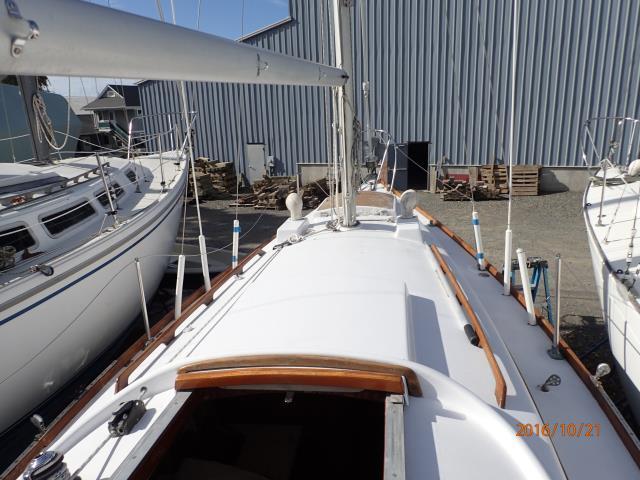
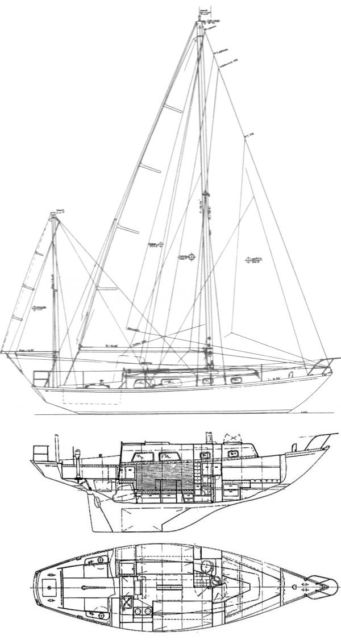
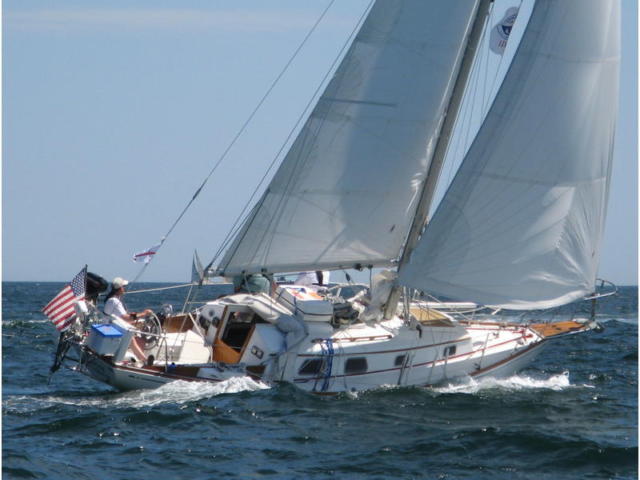
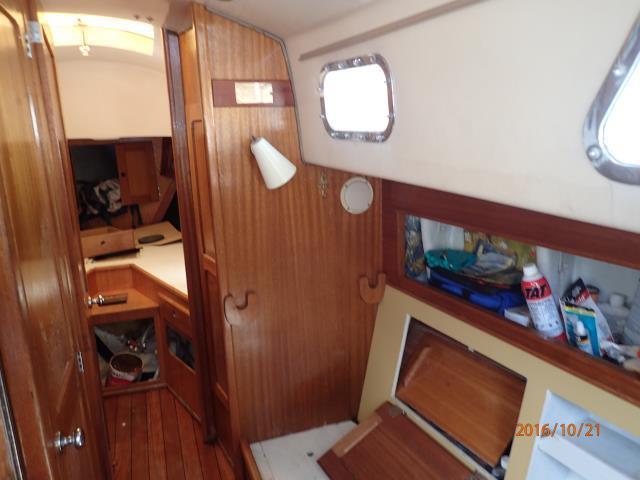
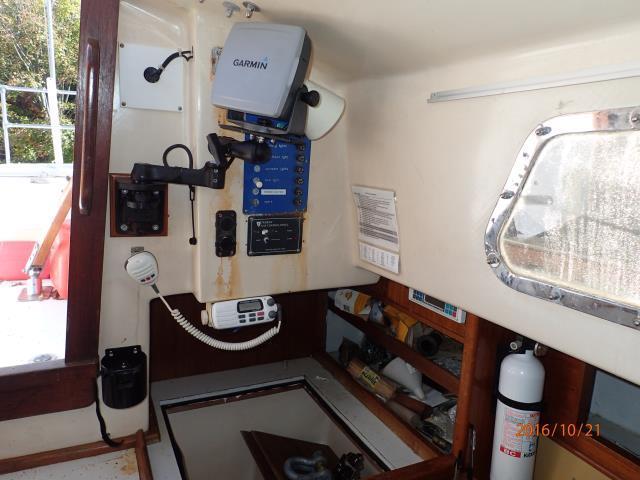
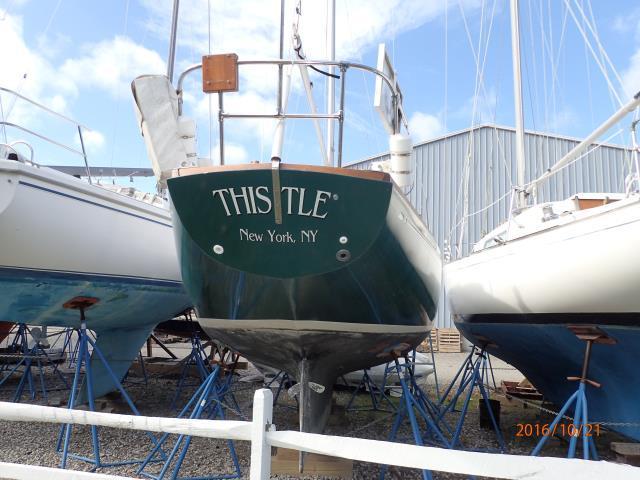
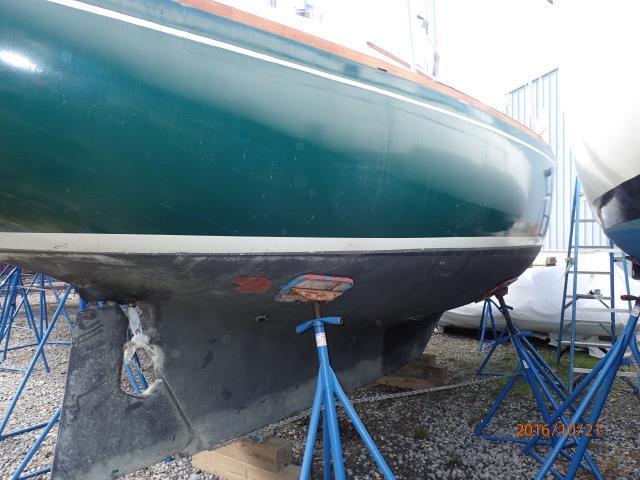
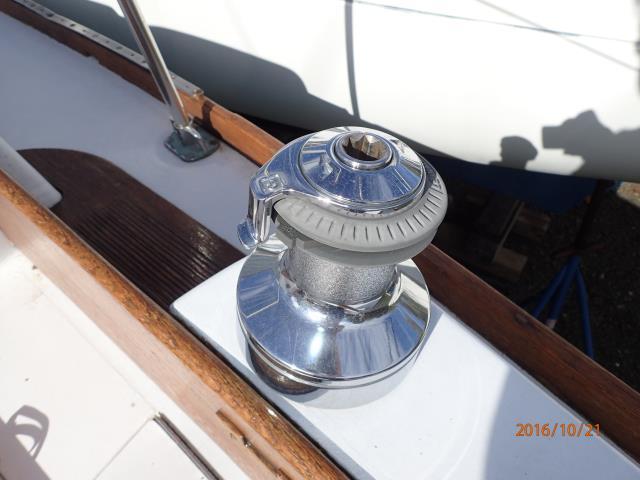
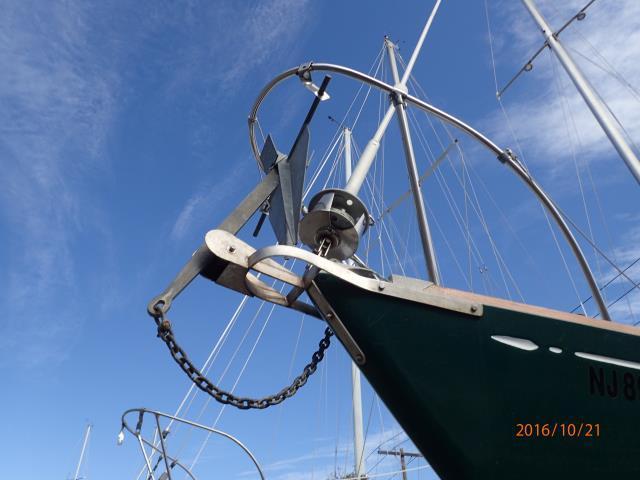
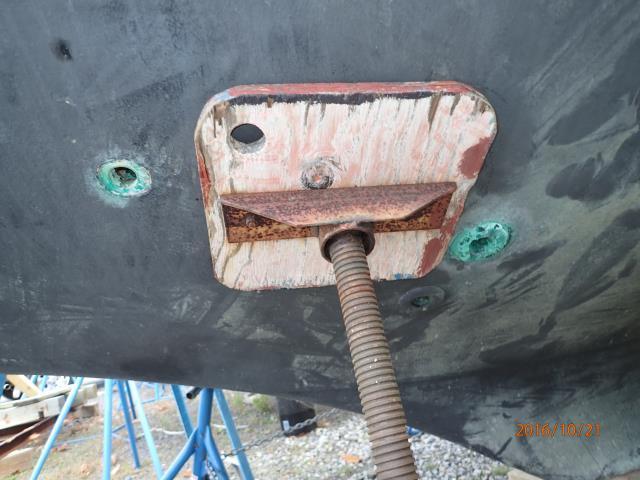
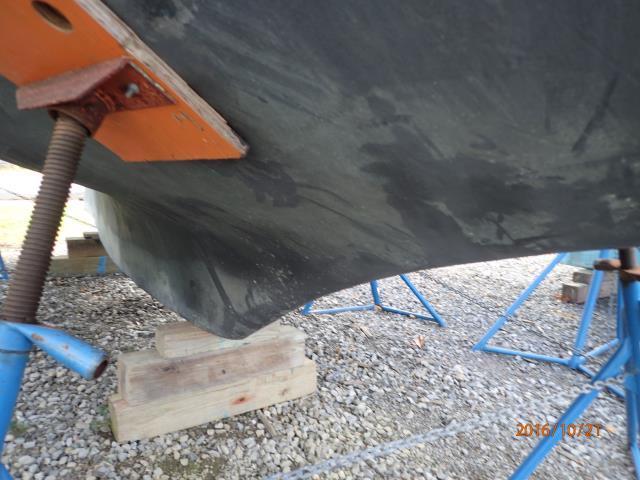
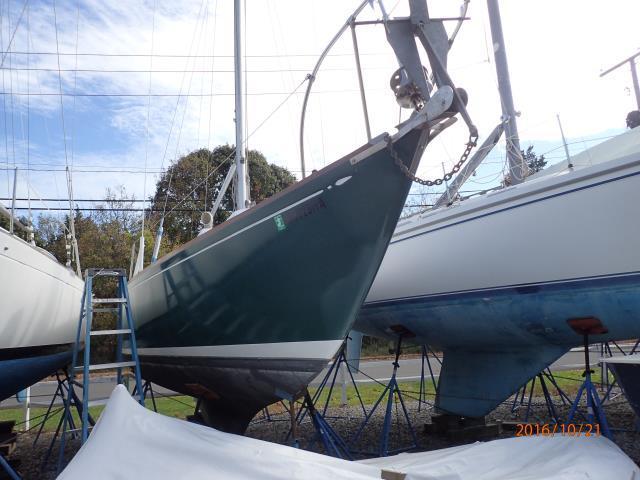
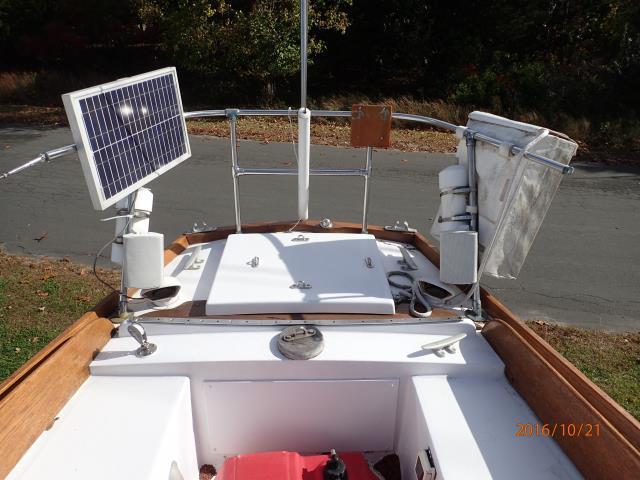
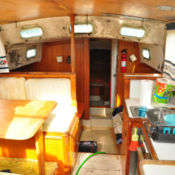 PERFECT VESSEL FOR COUPLE TO CIRCUMNATIGATE -GLOBALLY CAPABLE PILOTHOUSE CRUISER
PERFECT VESSEL FOR COUPLE TO CIRCUMNATIGATE -GLOBALLY CAPABLE PILOTHOUSE CRUISER
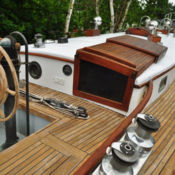 No Reserve -True Auction WORLD'S MOST PERFECT DESIGN ATKINS 40 FT GLOBAL CRUISER
No Reserve -True Auction WORLD'S MOST PERFECT DESIGN ATKINS 40 FT GLOBAL CRUISER
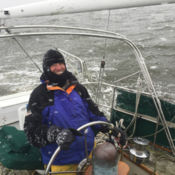 NO Reserve 4OFT LOCALLY FAMOUS WORLD CRUISER - Full Blue-Water Cruising Package
NO Reserve 4OFT LOCALLY FAMOUS WORLD CRUISER - Full Blue-Water Cruising Package
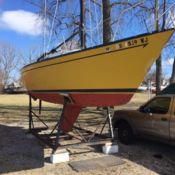 1977 San Juan Sail Boat 24' yacht keel sailboat GC Sails included ready to sail.
1977 San Juan Sail Boat 24' yacht keel sailboat GC Sails included ready to sail.
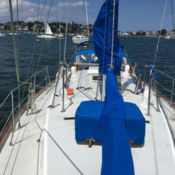 Brewer 41' Steel Hull sailboat, full keel
Brewer 41' Steel Hull sailboat, full keel
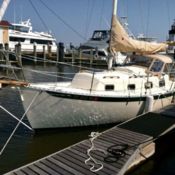 Built to Sail Around the World! Like New 2003 Pacific Seacraft Dana
Built to Sail Around the World! Like New 2003 Pacific Seacraft Dana
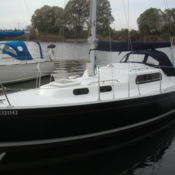 ALBIN VEGA 27' Full Keel Ocean Going Fiberglass Day Sailer Cruising Sailboat
ALBIN VEGA 27' Full Keel Ocean Going Fiberglass Day Sailer Cruising Sailboat
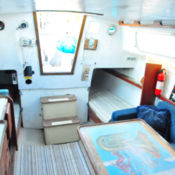 NO RESERVE - Rugged Medium Size Global Cruiser XLent Single Handing/Couple CAL30
NO RESERVE - Rugged Medium Size Global Cruiser XLent Single Handing/Couple CAL30
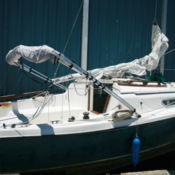 MACGREGOR 23 ft SAIL BOAT 80'S VINTAGE DAY SAILOR ,DROP KEEL,8HP NISSAN MOTOR
MACGREGOR 23 ft SAIL BOAT 80'S VINTAGE DAY SAILOR ,DROP KEEL,8HP NISSAN MOTOR
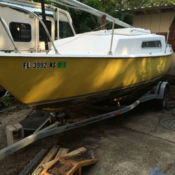 1972 SOUTH COAST ,22 FOOT SWING KEEL SAIL BOAT PROJECT
1972 SOUTH COAST ,22 FOOT SWING KEEL SAIL BOAT PROJECT